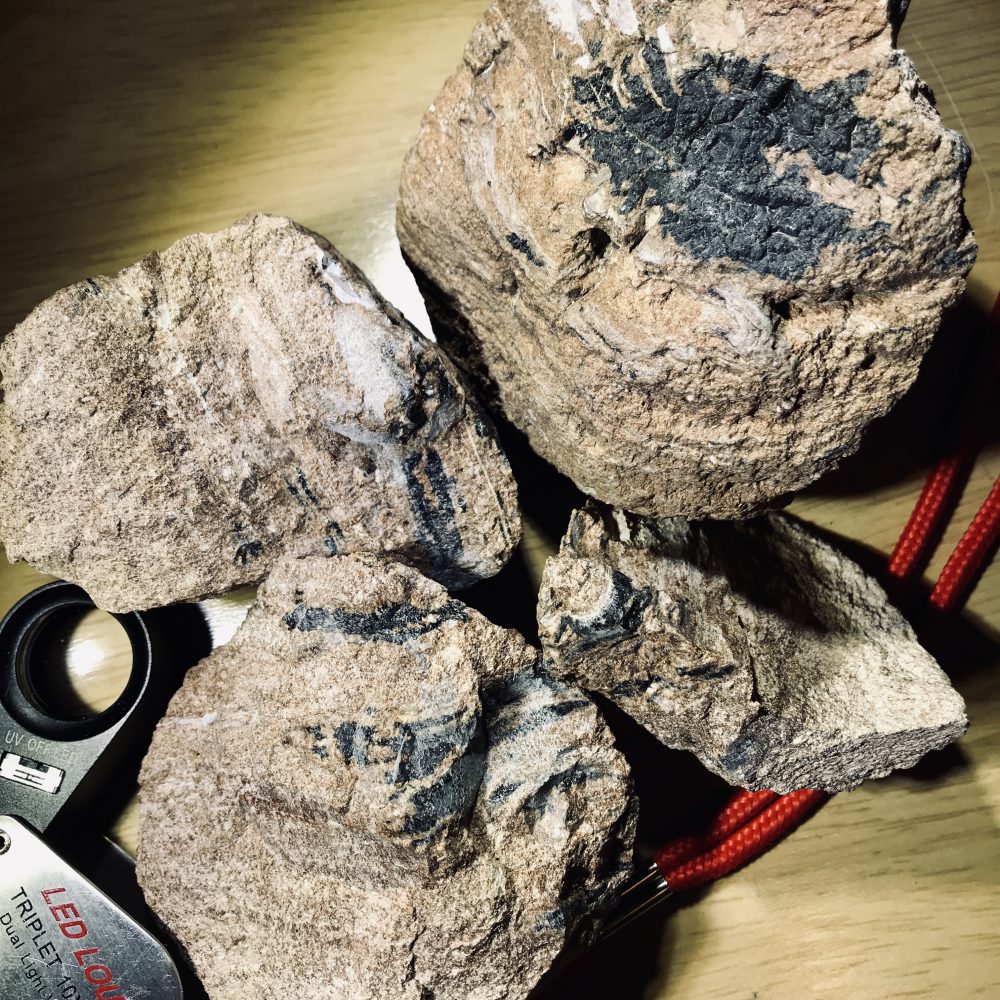Acting on a non-ferrous signal from a rock in a wash near Lathrop Wells, Nevada, I moved upstream to see if I could find the source of whatever metal was causing my detector to ring out.
There were no records of any commercial mines in the Striped Hills near Lathrop Wells, however, there were passing mentions of old copper prospects in the area. These are limestone hills and I didn’t think of them as producing any metallic ore from uplifted seabeds. Where would copper come from by way of calcium carbonate shells and the skeletons of ancient sea creatures?
— Update: Actually, there are carbonate or sedimentary based minerals like azurite and malachite in the copper group can definitely arise in a sedimentary location, given the right conditions. As RC with Geological Specimen Supply explained to me, “Limestone against granitics often gives rise to a contact deposit. If the granitic is quartz monzonite, the mineralization is often copper.”
— Update: Another contact deposit appears to have happened at the Yellow Pine Mine in the Goodsprings District in Clark County, Nevada. The Yellow Pine is a world class locality for hydrozincite. It was there a friend and I conducted a nighttime fluorescent mineral hunt with great success.
There were some volcanics in the area as I noticed when I first got out of my truck. Quartz pieces were scattered here and there. Most quartz arises from or is related to volcanic activity.
These exploratory diggings proved very difficult to find as the road to them had long been cut to pieces by countless desert storms over the decades. An ATV might make it in, but first you have to know where you are going. To find out, I set out hiking on foot with my tools, just as I have done with most of my gold prospecting.
I had GPS coordinates for some of these ancient claims but a GPS fix on an old mine is likely a conversion from the Public Land Survey System which does not use latitude and longitude. That means you will probably wind up in the middle of a claim area, which could be twenty acres in size, not at any particular excavation or tunnel entrance.
The result was that I spent three half-days hiking up and down over many steep hills and on treacherously slippery, broken rock. This was mostly highly fractured quartzsite, a metamorphic altered from slate and before that shale. All first arising from ancient seabeds now raised up. Tough. Seen tougher.
I eventually found some pretty rocks as the last picture shows, however, all of them are essentially deposits like chrysocolla. The greener material leans toward malachite and chrysocolla, the bluer toward azurite. There is an extremely small amount of copper infused quartz. Nothing I found rang out like what I found in the desert wash that drains this area. By way of comparison, the copper mineral group member bornite definitely rings my detector as well as, of course, native copper.
I noticed a tremendous amount of black sand on the hills I hiked. All of it proved sterile when I processed two buckets of sand and gravel. To be fair, I didn’t have any fire assayed so I don’t know for sure. Processing microscopic gold, however, is for large scale operators. I will be back, though, if not for the minerals, then for the peace and quiet.

—

—

—

—

—

—

—

—

—
https://www.instagram.com/tgfarley/
Follow me on Instagram: tgfarley


